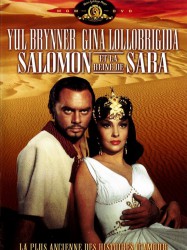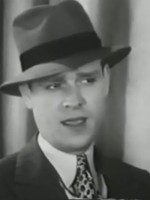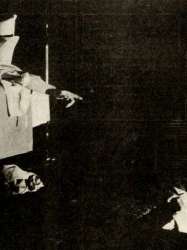Crane Wilbur est un Acteur, Réalisateur, Scénariste et Dialogue additionnel Américain né le 17 novembre 1886 à Athens (Etats-Unis)
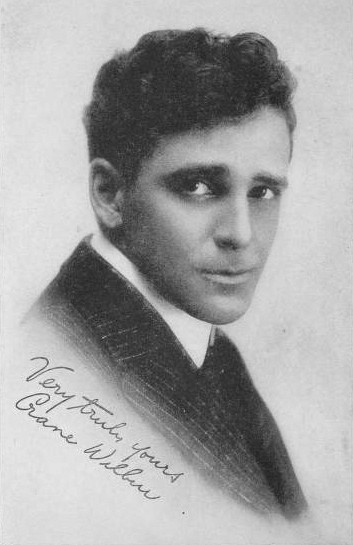
Crane Wilbur (né le 17 novembre 1886 à Athens dans l'État de New York et mort le 18 octobre 1973 à Toluca Lake en Californie) est un scénariste, acteur et réalisateur américain pour le théâtre, la radio et le cinéma.
He was born Irwin Wilbur on November 17, 1886, in Athens, New York. His father was a shipbuilder who committed suicide while Crane was a young man. Wilbur was a nephew of actor Tyrone Power, Sr., thereby making him a cousin of Tyrone Power.
In an article in the October 1915 issue of Motion Picture Magazine, Wilbur recalled, "My life hasn't been a path of roses, nor always the straight and narrow road. It has been mostly uphill, rocky climbing, with many a slip and stumble, a few falls and several scars to tell the tale." He added, "I have become what I am and have gained what I have by hard work. My preparatory school was the Academy of Experience, and I was finished in the College of Hard Knocks! I come of a theatrical family – was born at a rehearsal on a one-night stand; so, you see, I had to be an actor – I couldn't help it.”
His first appearance in a movie was in 1910 in The Girl From Arizona. Years later, he remembered the experience: “When my first picture was finished I haunted the picture theaters, trying to see it, and when I finally did see it, oh, what a disappointment! It isn’t always pleasant to see yourself as others see you. But it was a great lesson, that first picture. I did many things in that first one that I did not do in the second. It has always been most pleasant work to me, out in the open most of the time, playing manly, vigorous roles, living a hundred different lives before the camera.”
In seventeen films made between 1910 and 1913, Wilbur established himself as a realistic performer who brought youth, good looks, and strength to his characterizations.
In April 1910, the American Pathé studio formed and began producing films in a remodeled cash register factory at Bound Brook, New Jersey. Paul Panzer was one of its first players. Pearl White, a performer from vaudeville who had some movie experience with the Powers Picture Play Company, joined the fledgling studio. Wilbur identified with these players and became a member of their stock company. When the company planned to make a serial, The Perils of Pauline, in 1914, Wilbur wanted the lead male role that would pair him with Pearl White. He tested for and won the coveted role of Harry in the proposed serial.
In 1916 Wilbur scored a personal hit with a five-reel Mutual Masterpiece film, Vengeance is Mine, a thrilling story about the abolishment of capital punishment.
Vitagraph then hired him for his next assignment, The Heart of Maryland (1921), and on completion of the film Crane broke from film work altogether. He dropped out of Hollywood and returned to the stage – his first love – for several years. He wrote a modernization of The Bat, a play by Mary Roberts Rinehart and Avery Hopwood. There just was no work for him as an actor in films, so he took to the road. In 1924 Crane was touring in his own play, The Monster, a mystery tale that made The Bat look like a bedtime story. He was notable for his 1926 success in New York on Broadway in The Bride of the Lamb with Alice Brady, and later in 1930 in On the Spot with Anna May Wong.
Wilbur returned to Hollywood in 1929 to resume his acting, writing and directing career with many fictional and documentary films. In 1934 he appeared as an actor in three films: Name the Woman, High School Girl and Tomorrow’s Children, and also directed the last two. As an actor he played his last on-screen part in Jungle Queen (1945).
Wilbur's work on radio included Big Town, for which he was director and producer.
His work as a writer and director continued for the next 20 years. Outstanding successes, many of which are still shown today, include the screenplay for House of Wax (1953). In 1959 Allied Artists made another version of Mary Roberts Rinehart's play The Bat starring Vincent Price and Agnes Moorehead and directed by Wilbur. Crane's modernization had been an enormous success for many years, grossing upwards of $9,000,000. The story of eerie happenings in a creepy mansion rented for the summer by a writer of mystery novels had been perennially exciting for audiences, and kept him comfortably funded with royalties for years. Other films followed, including Solomon and Sheba (1959) and Mysterious Island (1961).
Crane suffered a stroke and died on October 18, 1973, in Toluca Lake, California.
Source : Wikidata
Crane Wilbur

- Infos
- Photos
- Meilleurs films
- Famille
- Personnages
- Récompenses
Nom de naissance Erwin Crane Wilber
Nationalité Etats-Unis
Naissance 17 novembre 1886 à Athens (Etats-Unis)
Mort 18 octobre 1973 (à 86 ans) à Toluca Lake (Etats-Unis)
Nationalité Etats-Unis
Naissance 17 novembre 1886 à Athens (Etats-Unis)
Mort 18 octobre 1973 (à 86 ans) à Toluca Lake (Etats-Unis)
Crane Wilbur (né le 17 novembre 1886 à Athens dans l'État de New York et mort le 18 octobre 1973 à Toluca Lake en Californie) est un scénariste, acteur et réalisateur américain pour le théâtre, la radio et le cinéma.
Biographie
Crane Wilbur was a prolific writer and director of at least 67 films from the silent era into the sound era, but it was as an actor that he found lasting recognition, particularly playing opposite Pearl White in the iconoclastic serial, The Perils of Pauline. He brought to the first motion pictures merry eyes, a great, thick crop of wavy, black hair and an athlete's interest in swimming and horseback riding. Twelve years of stage experience prepared him for his venture into the new art of silent motion pictures. He was one of the first to explore the techniques required to communicate through the wordless shadows of the movies.He was born Irwin Wilbur on November 17, 1886, in Athens, New York. His father was a shipbuilder who committed suicide while Crane was a young man. Wilbur was a nephew of actor Tyrone Power, Sr., thereby making him a cousin of Tyrone Power.
In an article in the October 1915 issue of Motion Picture Magazine, Wilbur recalled, "My life hasn't been a path of roses, nor always the straight and narrow road. It has been mostly uphill, rocky climbing, with many a slip and stumble, a few falls and several scars to tell the tale." He added, "I have become what I am and have gained what I have by hard work. My preparatory school was the Academy of Experience, and I was finished in the College of Hard Knocks! I come of a theatrical family – was born at a rehearsal on a one-night stand; so, you see, I had to be an actor – I couldn't help it.”
His first appearance in a movie was in 1910 in The Girl From Arizona. Years later, he remembered the experience: “When my first picture was finished I haunted the picture theaters, trying to see it, and when I finally did see it, oh, what a disappointment! It isn’t always pleasant to see yourself as others see you. But it was a great lesson, that first picture. I did many things in that first one that I did not do in the second. It has always been most pleasant work to me, out in the open most of the time, playing manly, vigorous roles, living a hundred different lives before the camera.”
In seventeen films made between 1910 and 1913, Wilbur established himself as a realistic performer who brought youth, good looks, and strength to his characterizations.
In April 1910, the American Pathé studio formed and began producing films in a remodeled cash register factory at Bound Brook, New Jersey. Paul Panzer was one of its first players. Pearl White, a performer from vaudeville who had some movie experience with the Powers Picture Play Company, joined the fledgling studio. Wilbur identified with these players and became a member of their stock company. When the company planned to make a serial, The Perils of Pauline, in 1914, Wilbur wanted the lead male role that would pair him with Pearl White. He tested for and won the coveted role of Harry in the proposed serial.
In 1916 Wilbur scored a personal hit with a five-reel Mutual Masterpiece film, Vengeance is Mine, a thrilling story about the abolishment of capital punishment.
Vitagraph then hired him for his next assignment, The Heart of Maryland (1921), and on completion of the film Crane broke from film work altogether. He dropped out of Hollywood and returned to the stage – his first love – for several years. He wrote a modernization of The Bat, a play by Mary Roberts Rinehart and Avery Hopwood. There just was no work for him as an actor in films, so he took to the road. In 1924 Crane was touring in his own play, The Monster, a mystery tale that made The Bat look like a bedtime story. He was notable for his 1926 success in New York on Broadway in The Bride of the Lamb with Alice Brady, and later in 1930 in On the Spot with Anna May Wong.
Wilbur returned to Hollywood in 1929 to resume his acting, writing and directing career with many fictional and documentary films. In 1934 he appeared as an actor in three films: Name the Woman, High School Girl and Tomorrow’s Children, and also directed the last two. As an actor he played his last on-screen part in Jungle Queen (1945).
Wilbur's work on radio included Big Town, for which he was director and producer.
His work as a writer and director continued for the next 20 years. Outstanding successes, many of which are still shown today, include the screenplay for House of Wax (1953). In 1959 Allied Artists made another version of Mary Roberts Rinehart's play The Bat starring Vincent Price and Agnes Moorehead and directed by Wilbur. Crane's modernization had been an enormous success for many years, grossing upwards of $9,000,000. The story of eerie happenings in a creepy mansion rented for the summer by a writer of mystery novels had been perennially exciting for audiences, and kept him comfortably funded with royalties for years. Other films followed, including Solomon and Sheba (1959) and Mysterious Island (1961).
Crane suffered a stroke and died on October 18, 1973, in Toluca Lake, California.
Ses meilleurs films
Le plus souvent avec
Filmographie de Crane Wilbur (57 films)
Acteur

Captain Calamity (1936)
, 1h6Réalisé par John Reinhardt
Origine Etats-Unis
Genres Action, Aventure
Thèmes La mer, Transport
Acteurs George F. Houston, Marian Nixon, Vince Barnett, Juan Torena, Movita Castaneda, Crane Wilbur
Rôle Dr. Kelkey
Note44%





A penniless ship's captain is taking a passenger ashore after their voyage. The passenger throws a gold coin in the ocean that he says has been bad luck to him as it was a gift from his ex-fiancee. The Captain sends one of his men, an experienced underwater diver, to successfully retrieve it. The passenger explains that is a gold Spanish doubloon and the Captain is more than welcome to it.

Yellow Cargo (1936)
, 1h3Réalisé par Crane Wilbur
Origine Etats-Unis
Genres Drame, Action, Policier, Romance
Acteurs Conrad Nagel, Eleanor Hunt, Vince Barnett, Jack La Rue, Claudia Dell, Harry Strang
Rôle Montie Brace
Note51%





This script must be run from the command line

Tomorrow's Children (1934)
, 1h10Réalisé par Crane Wilbur
Origine Etats-Unis
Genres Drame
Acteurs Donald Douglas, Donald Douglas, Ray Corrigan, Sterling Holloway, Dave O'Brien, Crane Wilbur
Rôle Father O'Brien (uncredited)
Note57%





A young woman wishes to marry her boyfriend and raise a family, but because her own family has been deemed "defective" by the state health authorities—her parents are lazy alcoholics who continue to have children, and her brothers are crippled, have mental problems or are jailed—a court orders her to undergo sterilization so that her family's "defective genes" won't be passed on to any more children. Her boyfriend and a kind priest desperately search for a way to stop the forced sterilization before it's too late.

The Heart of Maryland (1921)
Réalisé par Tom Terriss
Origine Etats-Unis
Genres Drame
Thèmes Adaptation d'une pièce de théâtre
Acteurs Catherine Calvert, Crane Wilbur, Ben Lyon, William Collier Jr., Warner Richmond, Bernard Siegel
Rôle Alan Kendrick

Something Different (1920)
Réalisé par Edward Brophy, Roy William Neill
Origine Etats-Unis
Acteurs Constance Binney, Ward Crane, Crane Wilbur, Grace Van Studdiford
Rôle Don Luis Vargas
As summarized in a film publication, Alice Lea (Binney), an heiress reaching the end of her funds, was being forced into a marriage for money, so she decided to seek adventure in Central American and visit a friend. She learned that Don Luis (Wilbur), husband of her friend, was hostile to the government and secretly planning to overthrow it. At the government ball Alice met Don Mariano, head of the army. During the ball she witnessed Mariano kill a spy and hated him for his cruelty. Later Alice is taken prisoner by Mariano on suspicion that she is aiding Don Luis in his revolt. Alice was made very comfortable in Don Mariano's home and, while she would not admit it, she was falling in love with her captor. Mariano was also falling in love with his captive, so much so that managed her release and also promised that of her friend's husband Don Luis, who had been captured and likely faced death. Alice returned to her home, and was soon followed by Mariano, who had been exiled for allowing the prisoners to escape. He told Alice of his love, and of course they lived happily thereafter.
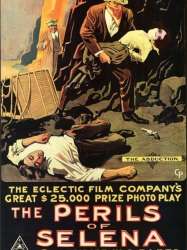
Les Périls de Pauline (1914)
Réalisé par Louis Gasnier, Donald MacKenzie
Origine Etats-Unis
Genres Drame, Comédie, Action, Aventure
Acteurs Pearl White, Crane Wilbur, Paul Panzer, Edward José, Louis Gasnier, Donald MacKenzie
Rôle Harry Marvin
Note63%





Pauline, jeune et riche héritière, repousse son mariage avec Harry, souhaitant d'abord connaître une « vie d'aventures ». Ne pouvant hériter qu'à la seule condition de se marier, sa fortune est administrée jusqu'à nouvel ordre par Owen, secrétaire du défunt Sanford Marvin. Se voyant placé définitivement à la tête de cet empire financier, s'il arrivait malheur à Pauline, le machiavélique Owen décide de supprimer celle-ci par tous les moyens, avec la complicité récurrente d'un dénommé Hicks. (Wikipédia)

A Nation's Peril (1912)
Réalisé par Joseph A. Golden
Acteurs Paul Panzer, Crane Wilbur, Hal Reid
Rôle Capitaine Porter
Réalisateur
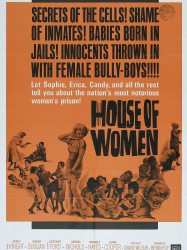
House of Women (1962)
, 1h25Réalisé par Crane Wilbur, Walter Doniger
Origine Etats-Unis
Genres Drame, Policier
Thèmes La prison, Sexualité, Erotique, Sexploitation, Prison pour femmes
Acteurs Shirley Knight, Andrew Duggan, Constance Ford, Barbara Nichols, Margaret Hayes, Jeanne Cooper
Note60%





Erica Hayden (Knight) is a young expectant mother who is wrongly implicated in a crime and sent to prison for five years. Erica learns that she must find a guardian for her daughter or she will become a ward of the state. The prison's warden, Frank Cole (Duggan), becomes infatuated with Erica and effectively blocks her chances for a parole.

Le Masque (1959)
, 1h20Réalisé par Crane Wilbur
Origine Etats-Unis
Genres Drame, Thriller, Horreur, Policier
Thèmes Fantômes, Tueur en série, Adaptation d'une pièce de théâtre
Acteurs Vincent Price, Agnes Moorehead, Gavin Gordon, John Sutton, Darla Hood, Harvey Stephens
Note59%





Cornelia Van Gorder est une auteur de romans policiers à succès. Elle a loué pour les vacances une villa dont on lui révèle qu'elle a été le cadre d'assassinats sanglants perpétrés par un individu mystérieux connu sous le sobriquet "Le Masque". Sachant cela tout le personnel de Cornelia fuit la maison, à l'exception de la, gouvernante. Lors de la première nuit que passent les deux femmes dans la villa, "Le Masque" pénétre dans la villa et libère une chauve-souris , qui terrorise et mord la gouvernante. Celle-ci craint d'avoir contracté la rage et on fait appel au docteur Malcom Wells qui la rassure. Or ce docteur Wells paraît inquiétant, d'abord parce qu'auparavant un employé de la banque local lui confie qu'il a volé et caché des titres convertibles et qu'il a besoin de sa complicité. Wells fait semblant d'accepter et profite d'un moment d'inattention provoqué par un incendie pour tuer froidement le voleur. Quelque temps après, nous voyons Wells dans son laboratoire faire des expériences sur des bébés chauves-souris en laissant le téléphone sonner. Une série de cambriolages et de meurtres perpétrés par "Le Masque" mobilise le chef local de la police, Andy Anderson. Cornelia Van Gorder a reconstitué son personnel et promu son chauffeur qui devient majordome, celui-ci a une attitude trouble, le détective apprend qu'il a un casier judiciaire et on le voit épier les occupants de la maison, puis faire un trou dans le mur en pleine nuit. Anderson soupçonne donc deux personnes : le majordome et le docteur Wells. Mais Wells est assassiné dans son laboratoire. L'un des détectives d'Anderson est à son tour assassiné pendant son tour de garde. Cornelia Van Gorder décide de prendre les choses en main, elle tente de savoir ce qu'est ce mystérieux trou dans le mur, déclenche un mécanisme secret et se retrouve enfermée. Quand elle est libérée in extrémis, "Le Masque" apparait et s'apprête à tuer toutes les personnes présentes quand un coup de feu salutaire touche "Le Masque" dont l'identité est enfin révélée : il s'agit de l'inspecteur Anderson qui vient d'être abattu par le majordome.
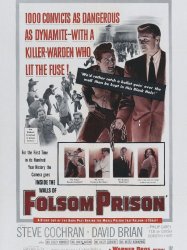 , 1h27
, 1h27Réalisé par Crane Wilbur
Origine Etats-Unis
Genres Drame, Policier
Thèmes La prison
Acteurs Steve Cochran, David Brian, Philip Carey, Ted de Corsia, Michael Tolan, Scott Forbes
Note65%





During 1920s, before the 1944 California prison reform, Warden Ben Rickey (Ted De Corsia) rules Folsom Prison with ruthless control. He believes that prisons should be used more for punishing the captive convicts, rather than using the time that they would spend behind the walls of the prison as an opportunity to reform their unruly behavior and repeated returns to a life behind bars. His methods of control are violent, torturous, and meant to beat the prisoners into submission.
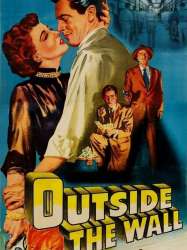
Outside the Wall (1950)
, 1h20Réalisé par Crane Wilbur
Origine Etats-Unis
Genres Drame, Thriller, Policier, Romance
Acteurs Richard Basehart, Marilyn Maxwell, Signe Hasso, Dorothy Hart, Joseph Pevney, John Hoyt
Note66%





Ex-convict Larry Nelson (Basehart), paroled from prison after serving nearly half of his thirty-year sentence, has problems finding employment. Determined to not fall into the clutches of the law again, he takes a job as a lab assistant in a country sanitarium. There he falls for attractive nurse Charlotte (Maxwell). Larry learns that the sanitarium is a front for a robbery syndicate and finally finds himself a clay pigeon for the gang. Sweet-and-wholesome nurse Ann (Hart) helps Larry to get out of the unpleasant situation.

Pénitencier du Colorado (1948)
, 1h22Réalisé par Crane Wilbur
Origine Etats-Unis
Genres Drame, Thriller, Action, Noir, Policier
Thèmes La prison
Acteurs Scott Brady, Stanley Clements, Jeff Corey, DeForest Kelley, Whit Bissell, Ralph Byrd
Note64%





Schwartzmiller a mis au point l'évasion d'une douzaine de détenus de la prison du Colorado, préparés pendant plusieurs mois.
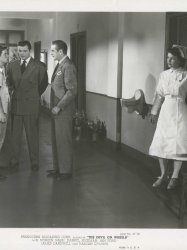
The Devil on Wheels (1947)
, 1h7Réalisé par Crane Wilbur
Origine Etats-Unis
Genres Drame
Acteurs Darryl Hickman, Terry Moore, Sue England, William Forrest, Robert Arthur, Damian O'Flynn
Note53%





The film is an early morality play on the dangers of speeding behind the wheel.
 Connexion
Connexion
